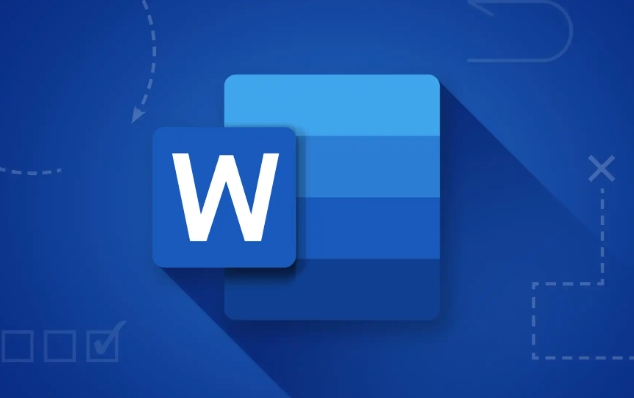how to align text in word
Use the correct alignment in Word to improve the overall aesthetics of the document. The left alignment is suitable for the text and is natural and easy to read; the center alignment is suitable for the title and highlights the visual effect; the right alignment is suitable for signatures and other contents on the right. The operation steps are: select text → click the alignment button under the "Start" tab. Align the two ends to automatically stretch the paragraphs, and the last line is aligned left, suitable for formal documents; dispersed alignment forces each line to flatten, suitable for promotional pages, but pay attention to the spacing of Chinese characters. If you need precise control, you can adjust the indentation, margin, first line indentation and other details through the "paragraph" settings, such as setting "first line indentation 2 characters" to improve format normativeness. Mastering these key points can effectively improve the quality of layout.

Aligning text looks simple in Word, but it is easy to cause problems if used incorrectly. In fact, as long as you master a few key points, you can quickly type the text neatly.

How to use basic operations such as left alignment, right alignment, and center alignment?
These three are the most common alignment methods, suitable for different scenarios such as title, body, signature, etc. For example, if you want a paragraph to be displayed on the right (such as the signature at the end of the letter), you can select that paragraph and click the "Right Align" button on the toolbar.
- Left alignment: suitable for the body, look natural and comfortable
- Center alignment: suitable for titles, subtitles, visually more prominent
- Right alignment: suitable for footer information, signatures, etc. that need to be right
The operation method is very simple: select text → find the alignment button under the "Start" tab → just click on the corresponding style.

What is the difference between two-end alignment and dispersed alignment?
These two look similar, but they are not the same. The two-end alignment is the default to the last line left alignment, and the other lines are automatically stretched and filled with the entire line; while the scatter alignment is the forced flattening of each line, including the last line.
For example, if you are writing a formal document, such as a report or paper, it is recommended to align the two ends so that the paragraphs look neat and not abrupt. But if you are doing content such as promotional pages and table descriptions, dispersed alignment can make each line full and visually more unified.

However, it should be noted that dispersed alignment sometimes has too large characters in Chinese environments, which makes it not very beautiful, so it should be judged based on the actual effect when using it.
Want to control it accurately? Try the alignment details in paragraph settings
Sometimes just relying on buttons is not fine enough. For example, if you want to leave a little space on the left side of a certain paragraph, or if you want to have a certain indentation distance in front and back of a paragraph, you should use the "paragraph" setting to adjust it.
Operation path: Select paragraph → Right-click to select "Paragraph" → You can set it in the pop-up window:
- Alignment
- Indent left and right margins
- The distance between the front and rear sections
- First line indentation
For example, if you want the first line of the text to indent two characters, you can select "first line indentation" in "Special Format" and set the value to "2 characters". This small detail makes the document look more standardized.
Basically that's it. Alignment may seem like a trivial matter, but if done well, it will immediately increase the document and it will not be too complicated. The key is to know when and which method is used.
The above is the detailed content of how to align text in word. For more information, please follow other related articles on the PHP Chinese website!

Hot AI Tools

Undress AI Tool
Undress images for free

Undresser.AI Undress
AI-powered app for creating realistic nude photos

AI Clothes Remover
Online AI tool for removing clothes from photos.

Clothoff.io
AI clothes remover

Video Face Swap
Swap faces in any video effortlessly with our completely free AI face swap tool!

Hot Article

Hot Tools

Notepad++7.3.1
Easy-to-use and free code editor

SublimeText3 Chinese version
Chinese version, very easy to use

Zend Studio 13.0.1
Powerful PHP integrated development environment

Dreamweaver CS6
Visual web development tools

SublimeText3 Mac version
God-level code editing software (SublimeText3)
 How to Screenshot on Windows PCs: Windows 10 and 11
Jul 23, 2025 am 09:24 AM
How to Screenshot on Windows PCs: Windows 10 and 11
Jul 23, 2025 am 09:24 AM
It's common to want to take a screenshot on a PC. If you're not using a third-party tool, you can do it manually. The most obvious way is to Hit the Prt Sc button/or Print Scrn button (print screen key), which will grab the entire PC screen. You do
 how to start page numbering on a specific page in Word
Jul 17, 2025 am 02:30 AM
how to start page numbering on a specific page in Word
Jul 17, 2025 am 02:30 AM
To start the page number from a specific page in a Word document, insert the section break first, then cancel the section link, and finally set the start page number. The specific steps are: 1. Click "Layout" > "Delimiter" > "Next Page" section break on the target page; 2. Double-click the footer of the previous section and uncheck "Link to previous section"; 3. Enter a new section, insert the page number and set the starting number (usually 1). Note that common errors such as not unlinking, mistaken section breaks or manual deletion of page numbers lead to inconsistency. You must follow the steps carefully during the operation.
 how to draw on a Word document
Jul 16, 2025 am 03:45 AM
how to draw on a Word document
Jul 16, 2025 am 03:45 AM
There are three main ways to draw in Word documents: using the Insert Shape tool, using the Drawing panel for handwriting input, and overlay drawing after inserting pictures. First, click "Insert" → "Shape", and you can draw lines, rectangles, circles and other graphics, and support combination and style adjustment; secondly, through the "Drawing" tab, you can use the stylus or mouse to select pen type, color, eraser and other tools to write or mark naturally; finally, after inserting the picture, you can use the shape or ink tool to mark the picture to highlight key information.
 How to blur my background in a Teams video call?
Jul 16, 2025 am 03:47 AM
How to blur my background in a Teams video call?
Jul 16, 2025 am 03:47 AM
The method of blurring the background in Teams video calls is as follows: 1. Ensure that the device supports virtual background function, you need to use Windows 10 or 11 system, the latest version of Teams, and a camera that supports hardware acceleration; 2. Click "Three Points" → "Apply Background Effect" in the meeting and select "Blur" to blur the background in real time; 3. If you cannot use the built-in function, you can try third-party software, manually set up physical backgrounds, or use an external camera with AI function. The whole process is simple, but you need to pay attention to system version and hardware compatibility issues.
 How to get the last value in a column in Excel
Jul 26, 2025 am 08:03 AM
How to get the last value in a column in Excel
Jul 26, 2025 am 08:03 AM
To obtain the last value of a column in Excel, you can choose different methods according to the data characteristics: 1. Use the LOOKUP function to quickly find the last non-null value, which is suitable for situations where there may be empty rows in the data. The formula is =LOOKUP(2,1/(A:A""), A:A); 2. Use the INDEX COUNTA combination to process continuous data, which is suitable for data columns without empty rows, and the formula is =INDEX(A:A,COUNTA(A:A)); 3. Use the INDEX MATCH combination to obtain the last numeric value, which is suitable for data columns containing only numbers, and the formula is =INDEX(A:A,MATCH(9.99E 307,A:A)). this
 How to insert a picture into a cell in Excel
Jul 21, 2025 am 12:09 AM
How to insert a picture into a cell in Excel
Jul 21, 2025 am 12:09 AM
To embed an image into a cell in Excel, you need to set the position attribute and resize the cell. First, right-click and select "Size and Properties" after inserting the picture, and check "Change position and size with the cell"; secondly, adjust the cell row height or column width to adapt to the picture, or crop the picture to maintain the proportion; finally, you can use "As Image (Fill Cells)" in "Paste Special" to achieve the background filling effect.
 How to repeat header rows on each printed page in Excel
Jul 20, 2025 am 12:55 AM
How to repeat header rows on each printed page in Excel
Jul 20, 2025 am 12:55 AM
The method of setting duplicate title lines in Excel is as follows: 1. Open the Excel file and enter the worksheet to be printed; 2. Click the "Print Title" button in the "Page Layout" tab; 3. Select "Top Title Line" under the "Worksheet" tab and enter such as $1:$1; 4. Click "OK" to save the settings. If the title spans multiple rows, you can choose such as $1:$2. If the left column is repeated, set the "left title column", such as $A:$A. Common problems include insufficient table content, unlocked title row format, or inappropriate page breaks, which can be solved by inputting more data, checking formats, or adjusting paging previews. Quick access can be achieved through the shortcut key Alt PST.
 How to make a timeline in Excel
Jul 17, 2025 am 03:01 AM
How to make a timeline in Excel
Jul 17, 2025 am 03:01 AM
The key to making a timeline in Excel is to organize your data and select the right chart type. First, organize the data structure, including at least three columns: task name, start time and end time; second, insert the "cluster bar chart" as the timeline chart, and set the horizontal axis to date format to correctly display the time sequence; finally, beautify the chart by removing the legend, adjusting the colors, hiding grid lines, adding data labels, etc., and you can also insert shapes to connect the task to form a flow chart effect. In addition, you can quickly display time progress in a table using the "data stripes" in the conditional format, suitable for informal occasions.







